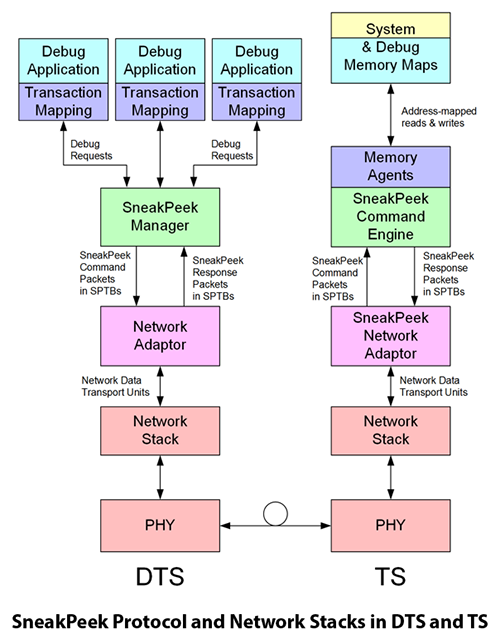MIPI SPP™
MIPI SneakPeek Protocol
.png?width=1200&height=600&name=Banner%20Images%20-%20MIPI%20(26).png)
Developed by: Debug Working Group
A network-independent approach for debugging terminal hardware and software
Quick Facts
-
Debug & Trace Portfolio
MIPI Alliance has a family of specifications that can be used to debug components in mobile devices as well as any device that is “smart” or connected, such as an end-point on the Internet of Things. Components that can be debugged with the tools include application processors, modems, device controllers, power management devices, and others.
All of these specifications are available for download and use by the public and the open source community.
Get the Specification
-
Current Version
MIPI SPP℠ v2.1 (May 2023)
Member version | Public version
| Public version 
-
Previous Versions
SPP v2.0 is available upon request. SPP v1.0 is available to MIPI members on the member website (Causeway).
Overview
General Info
-
Overview
The MIPI SneakPeek Protocol (MIPI SPPSM) is used to communicate between a debug test system (DTS) and a mobile terminal target system (TS). This communication facilitates using debug applications (typically software) within the DTS to debug the operation of the TS.
The SneakPeek Protocol abstracts the system designer from dedicated debug communication interfaces such as JTAG and replaces them with the familiar mechanism of address-mapped read and write transactions to enable the debug applications to observe, interrogate and adjust the target system.
These transactions might be addressed to main system memory, special function memories, or address-mapped peripherals within the TS. If the system requires legacy dedicated debug communication interfaces to be used internally within part of a system, then these could be constructed by a dedicated address-mapped peripheral within the target system that is then accessed by the DTS via SneakPeek.
MIPI SneakPeek is developed by the MIPI Debug Working Group. All MIPI debug and trace specifications, including MIPI SPP, are available for download and use by the public and the open source community. Members of the MIPI Alliance enjoy benefits including access to relevant licenses and opportunities to participate in development activities, interoperability workshops and other events.
-
Latest Release
SPP v2.1 adds details for a Secure Communication Manager Access Space. This Access Space provides implementations a mechanism to transfer control messages to a Security Agent within a given SoC to enable secure communication between the DTS and TS. These control messages use the DMTF Security Protocol and Data Model (SPDM) for the formatting of the SneakPeek Command and Response Packet data payloads, and for the flows between the DTS and the Security Agent in the TS. SPP v2.1 only defines this new Access Space, makes changes for inclusive language, and adds clarifications to other text.
MIPI SPP v2.0, introduced in August 2019, includes MIPI TinySPP, which is optimized for use with low-bandwidth and potentially high-latency interfaces. These include MIPI I3C®, the high-performance, low-power interface for links between sensors and application processors. TinySPP introduces features that reduce the data transfer and overhead requirements for debug and test communications. These include a shorter minimum packet length, a smaller transaction byte field, and a short addressing system.
In addition, MIPI SPP v2.0 defines packetized JTAG messaging. This messaging reduces the overhead involved in using JTAG to change state.
-
Diagrams & Tables
Debug Capabilities per Adjacent Industries
(best viewed on desktop)
SneakPeek Protocol and Network Stacks in DTS & TS
(click to enlarge)
Industries









